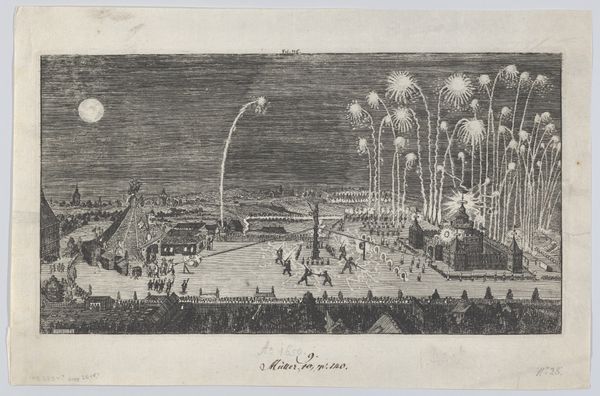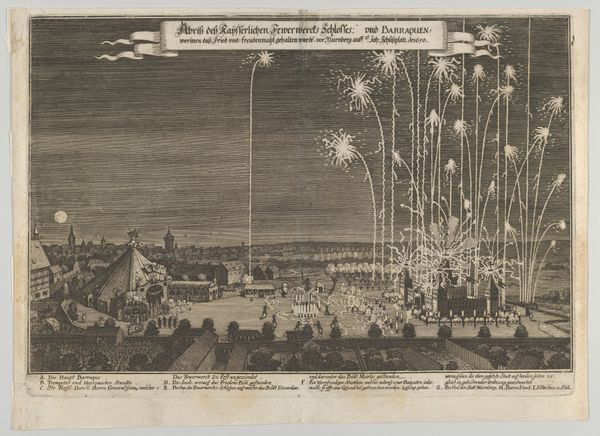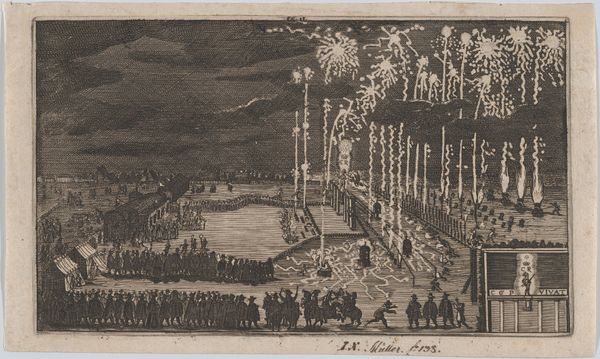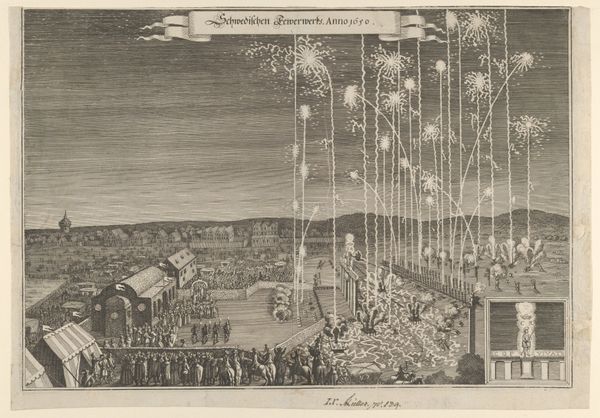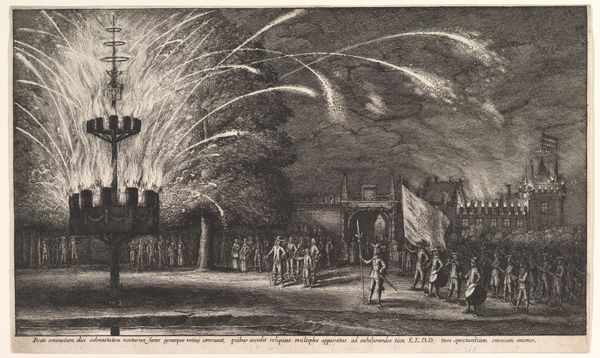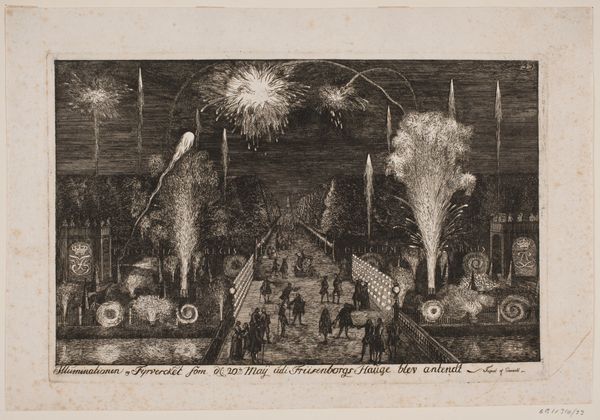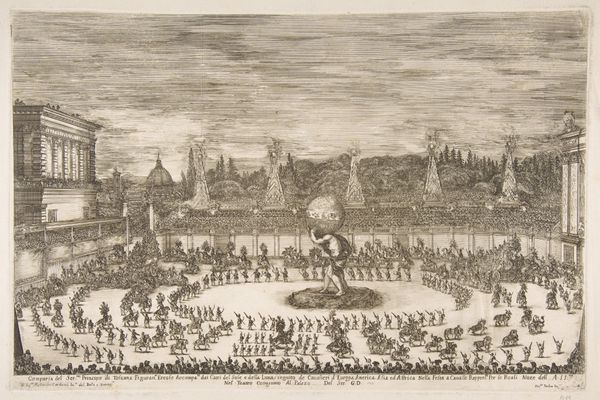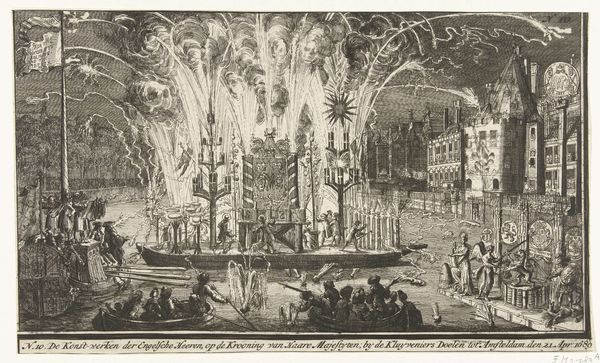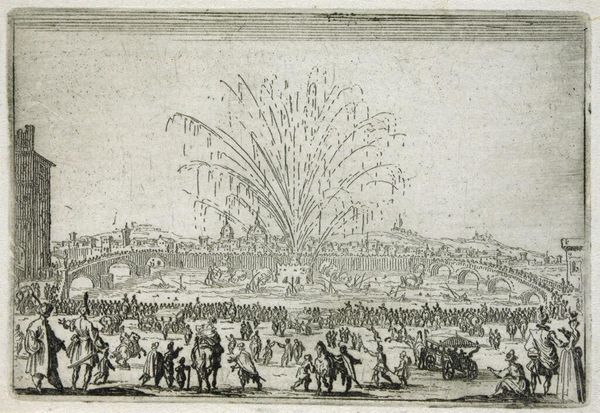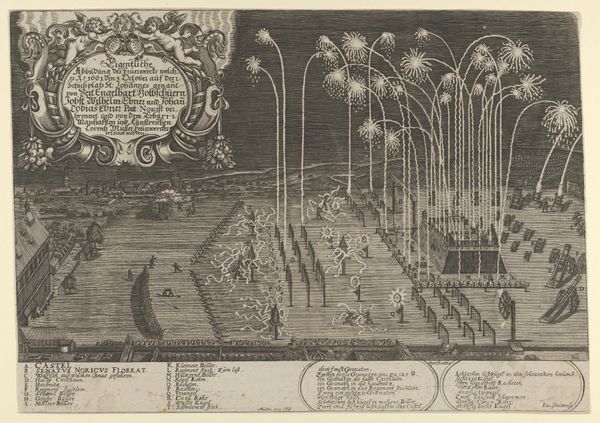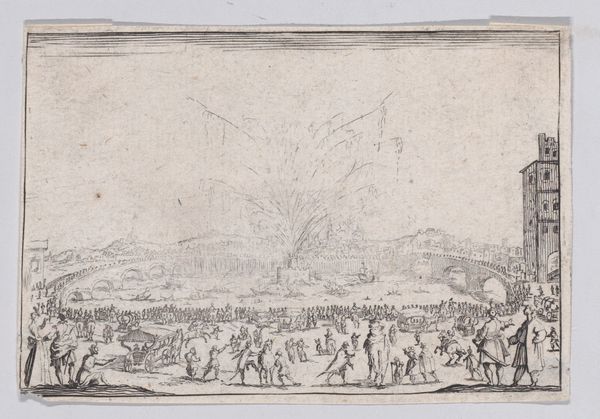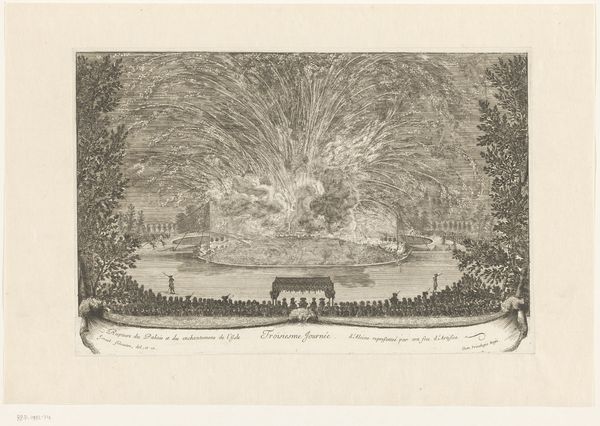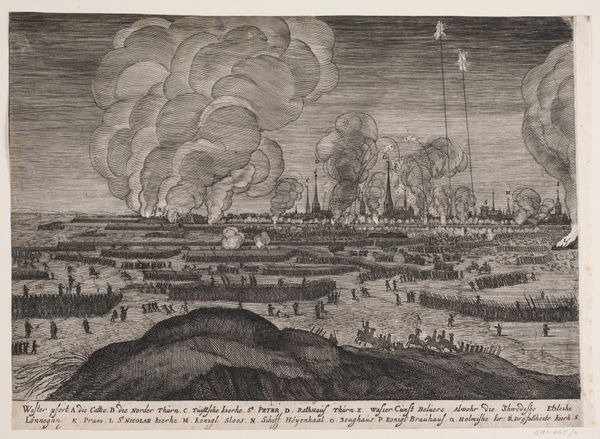
Fireworks display celebrating the end of the Thirty Years War, Nuremberg 1645 - 1655
0:00
0:00
Dimensions: Sheet (trimmed): 6 5/16 × 11 11/16 in. (16 × 29.7 cm)
Copyright: Public Domain
Editor: This is a striking engraving from between 1645 and 1655, "Fireworks display celebrating the end of the Thirty Years War, Nuremberg," created by an anonymous artist. The detail is amazing! It depicts a nighttime cityscape lit by a dazzling fireworks display. The mood is celebratory, of course, but I’m curious – what else can we unpack about this image? Curator: This engraving offers a fascinating glimpse into how public events were staged and memorialized in the 17th century. Nuremberg, as a prominent city in the Holy Roman Empire, would have been keen to demonstrate its power and stability after such a destructive conflict. The choice to depict the celebration as a drawing meant it was designed to be reprinted and circulated among audiences far and wide to broadcast a message of peace and the importance of celebration. How do you think that public staging impacts the meaning? Editor: That makes perfect sense; distributing it would reinforce Nuremberg's strength. I guess the artist's emphasis on controlled lines is significant because this kind of peace required specific rules. So it's about demonstrating Nuremberg's capability in managing peace, right? It seems the visual order reflects their ambition for political order. Curator: Exactly! The very act of producing this print, of disseminating this celebratory imagery, reinforced specific civic values. Consider how the display is presented – organized and symmetrical despite its inherent ephemerality. This highlights the intention of the civic spectacle: not just entertainment but also propaganda. The controlled chaos emphasizes a specific idea of imposed governance. What might people outside of Nuremberg think? Editor: Hmm… Maybe for those outside Nuremberg, particularly those still recovering from the war, this image served to promote reconciliation, presenting the city as a beacon of hope and recovery. I suppose what appears to be celebratory could also incite feelings of division? Curator: Precisely! The image walks that fine line between celebrating peace and asserting power. Art served a very clear public function in the 17th century. Editor: This makes me rethink how artworks can participate and shape history and politics! Thanks. Curator: My pleasure; it shows that engravings like these offer an interesting view of how public events contribute to identity creation, power display and maintaining stability.
Comments
No comments
Be the first to comment and join the conversation on the ultimate creative platform.

